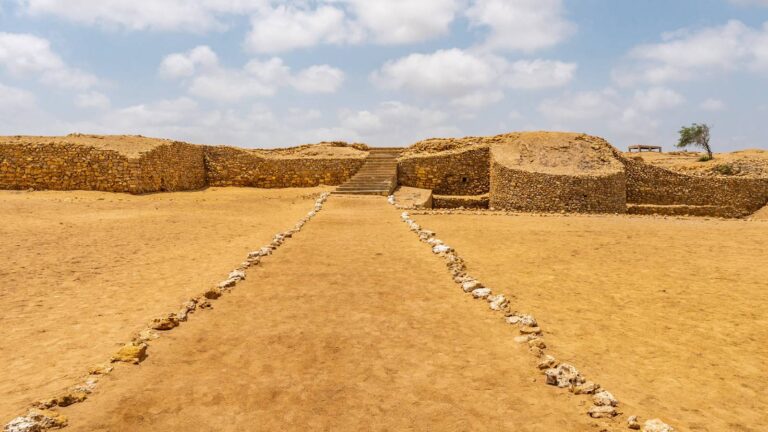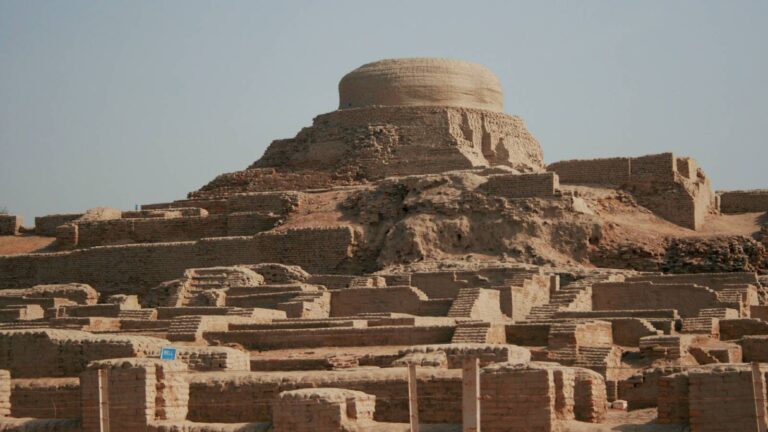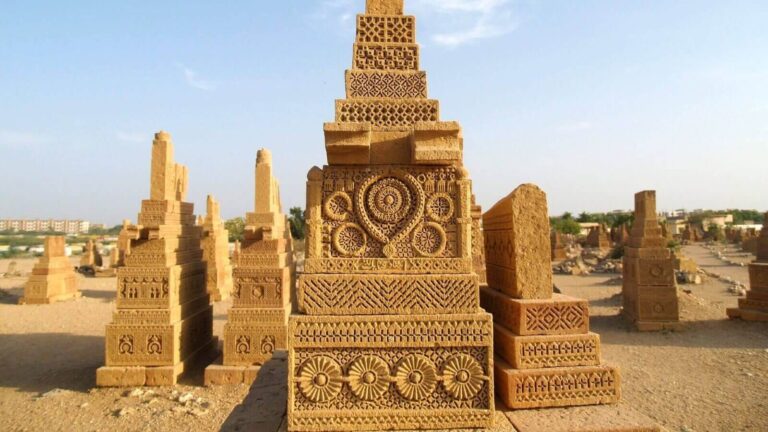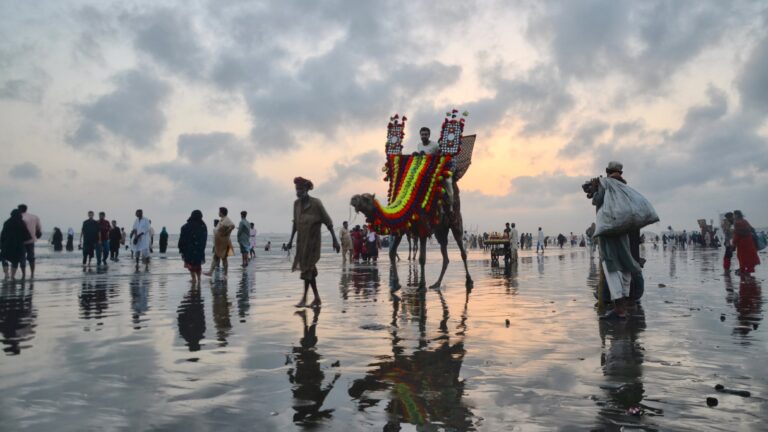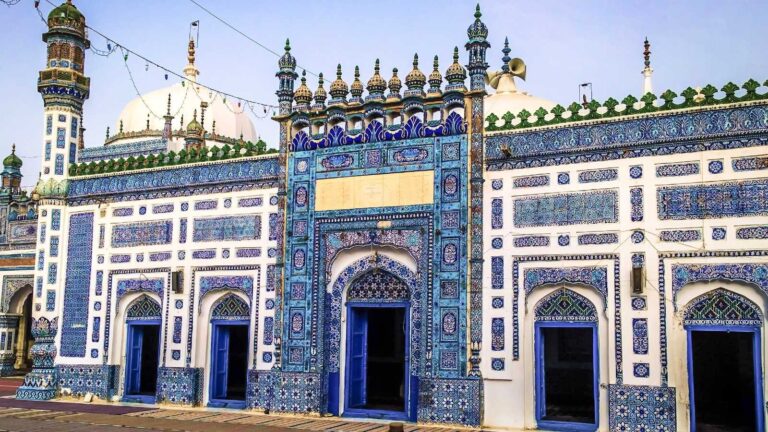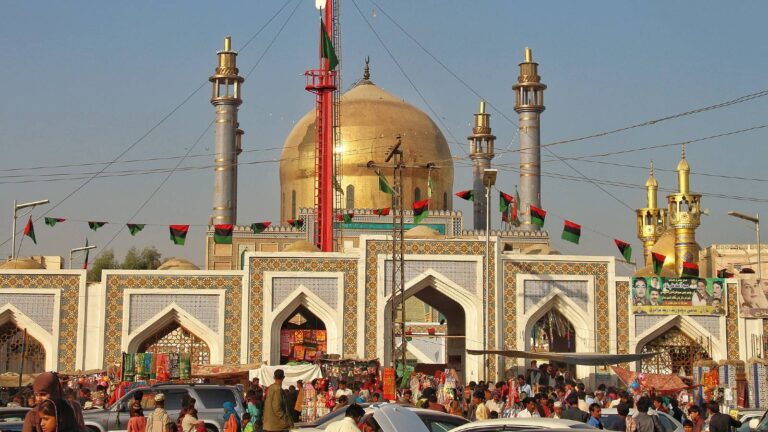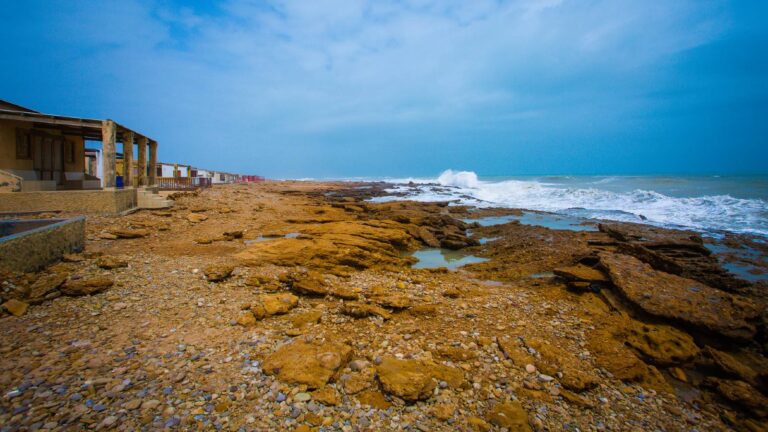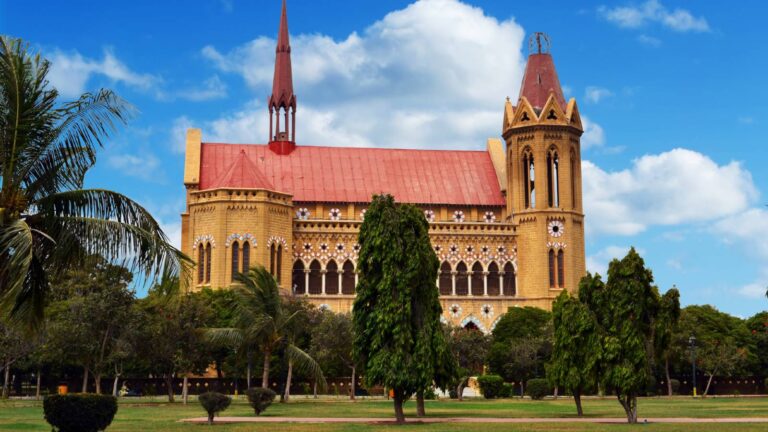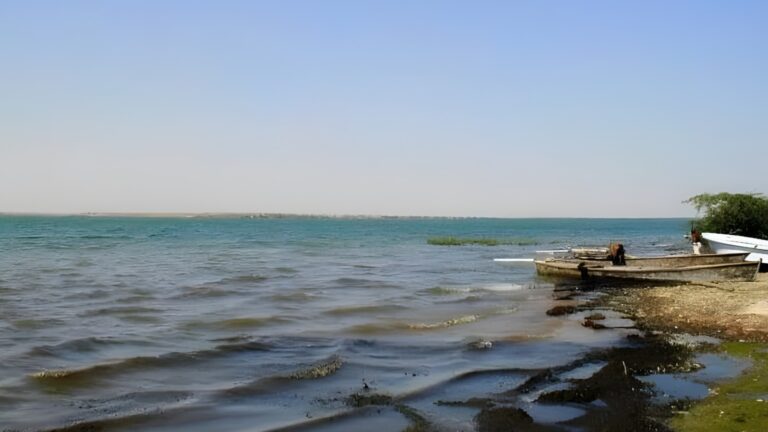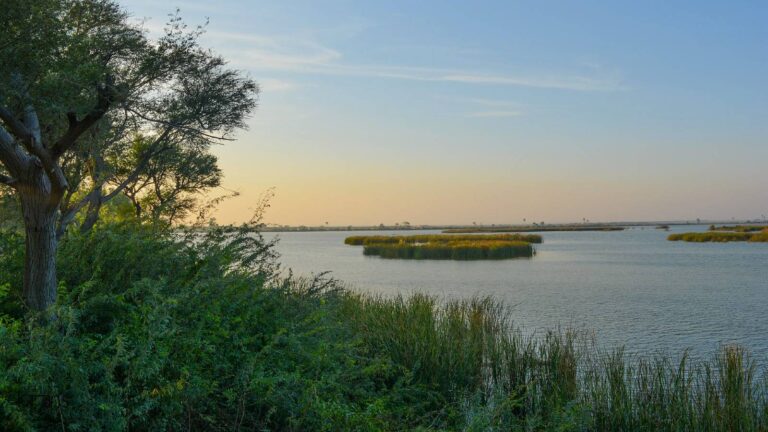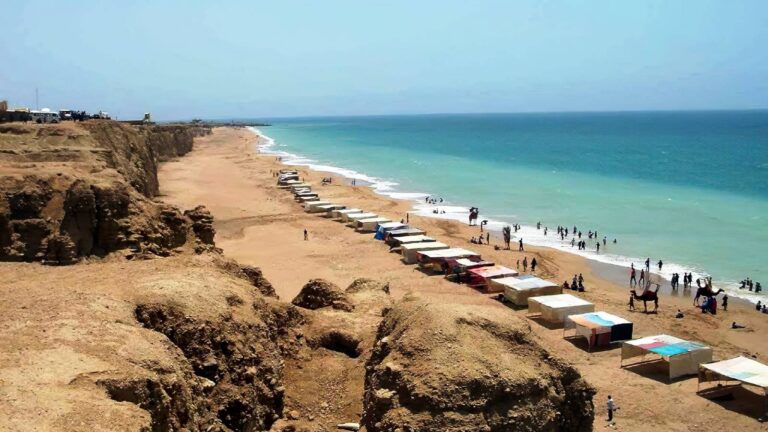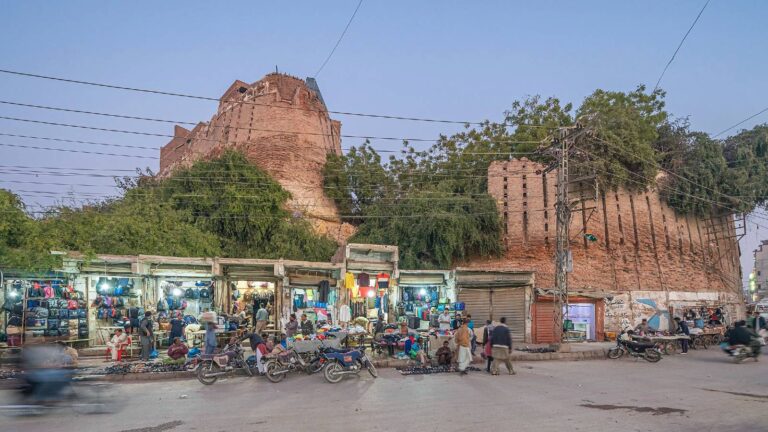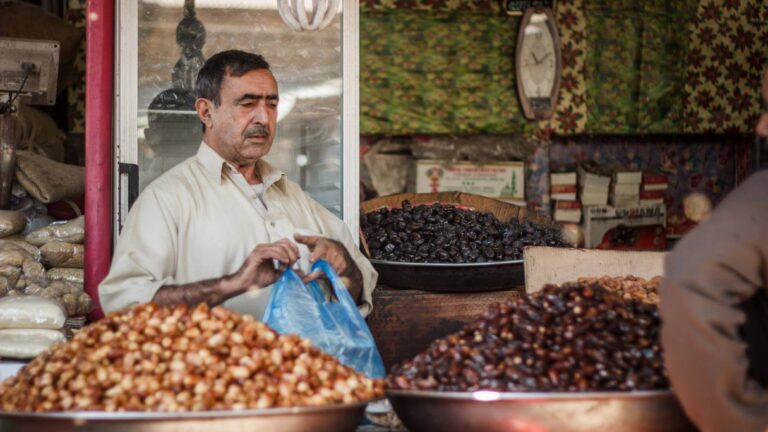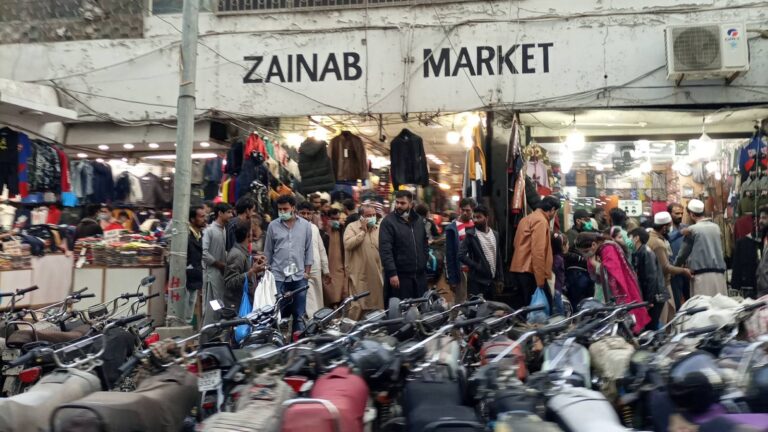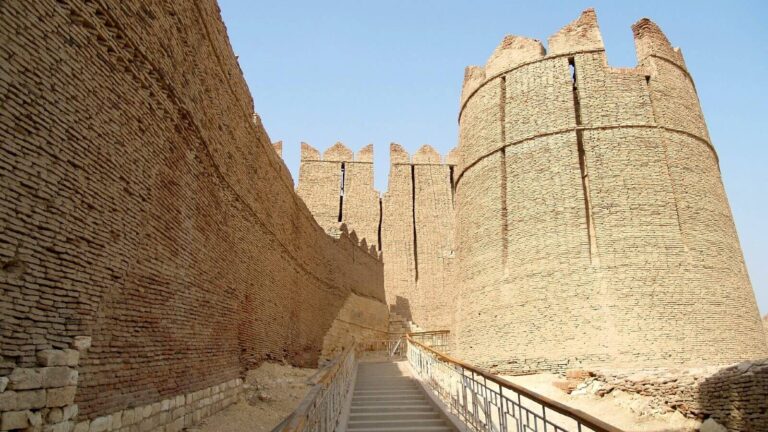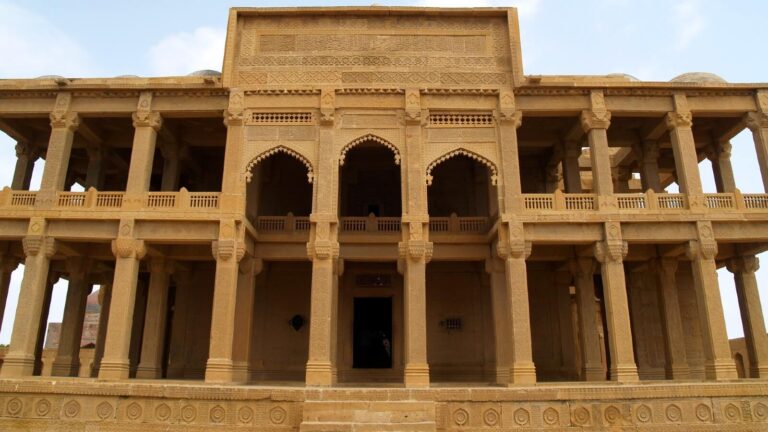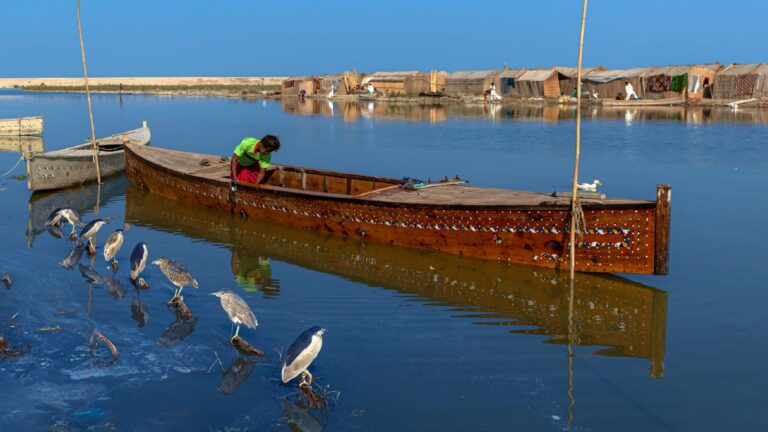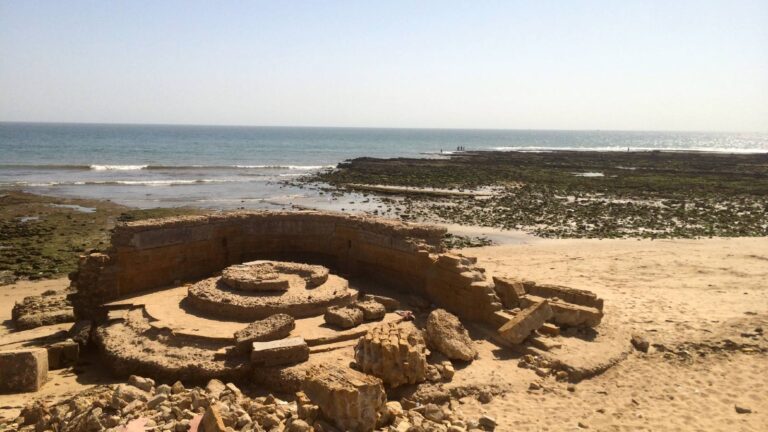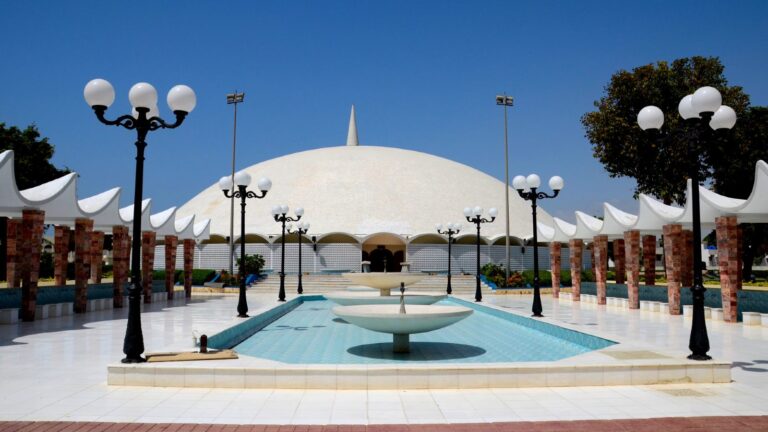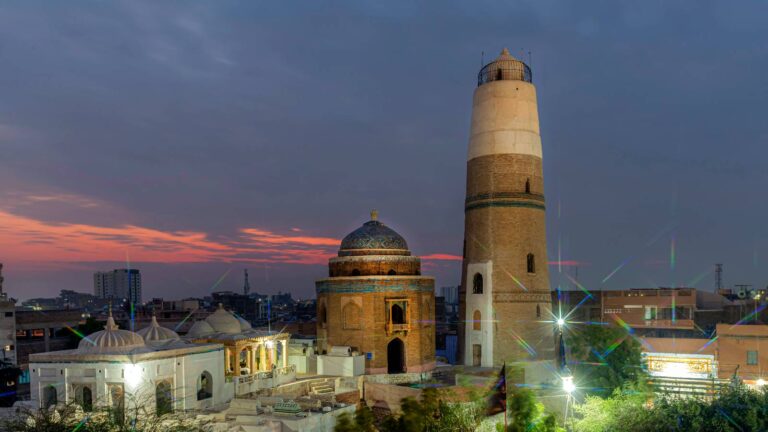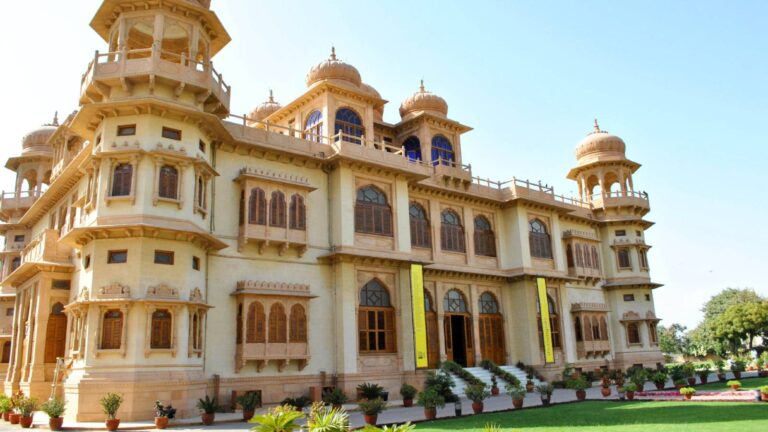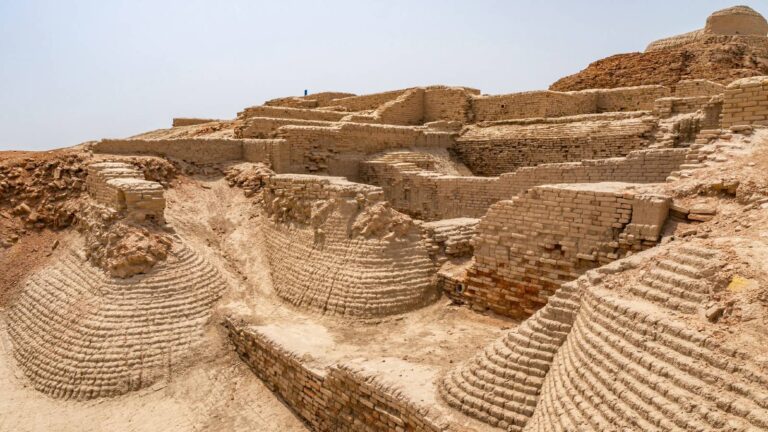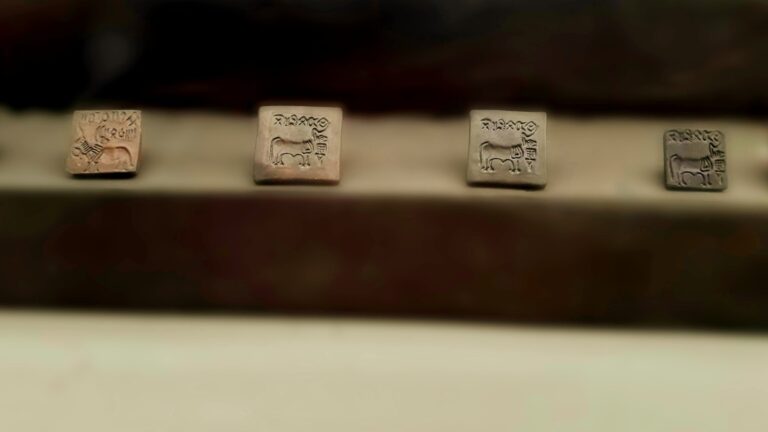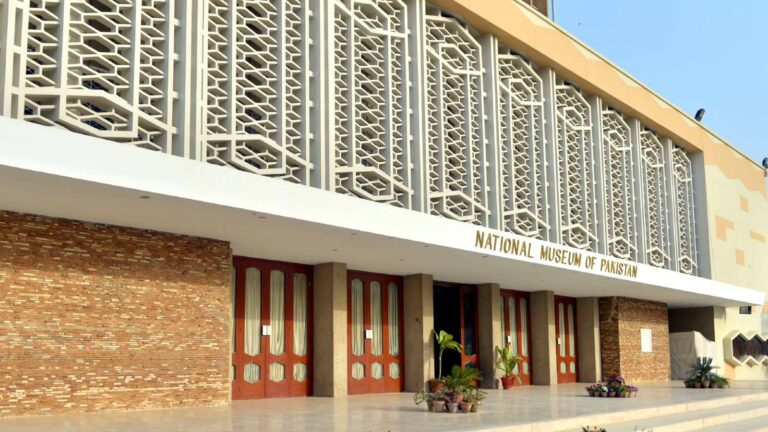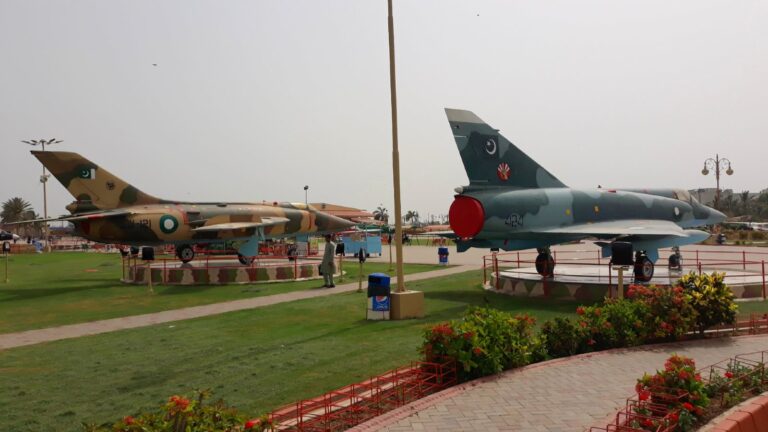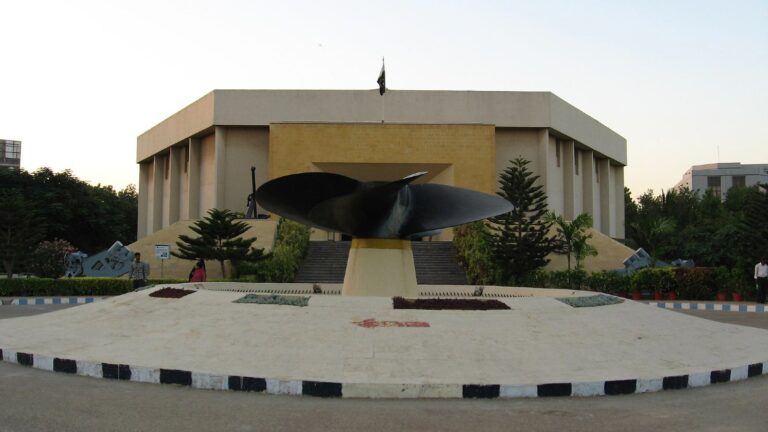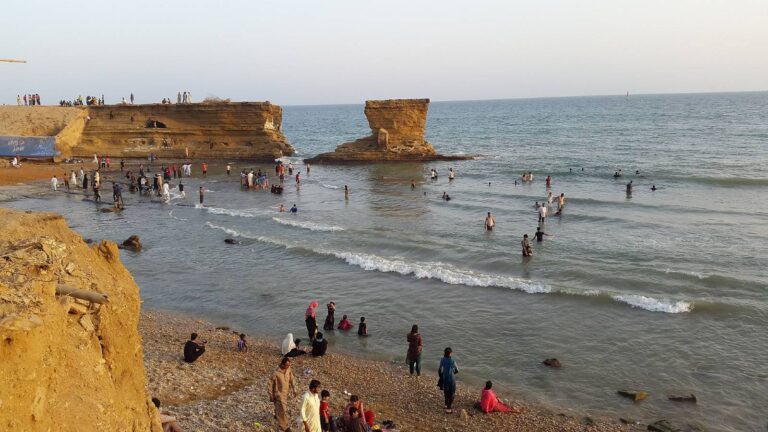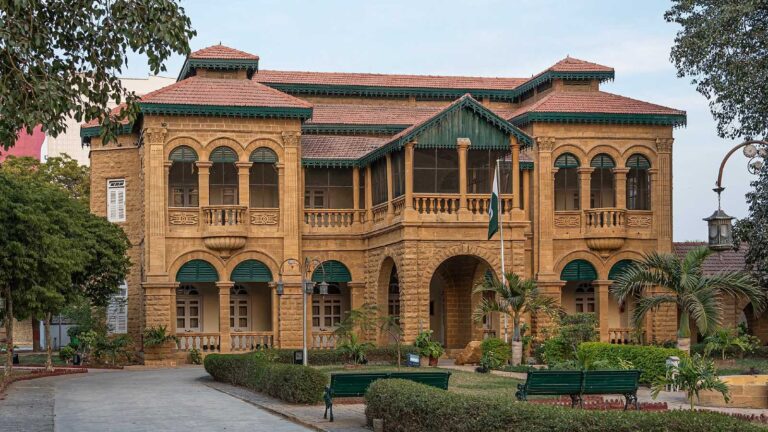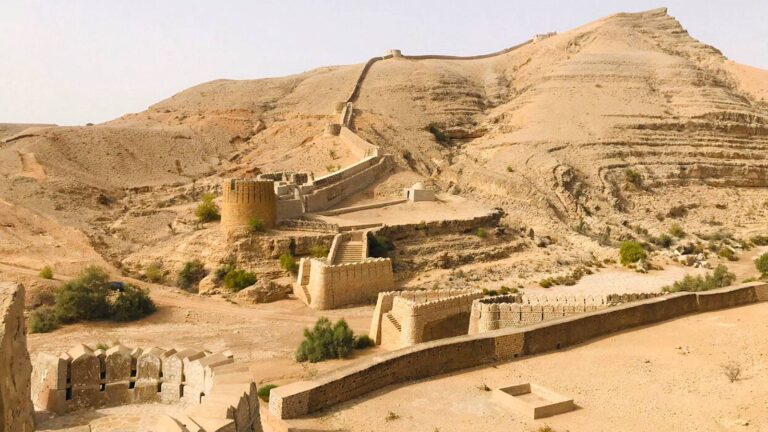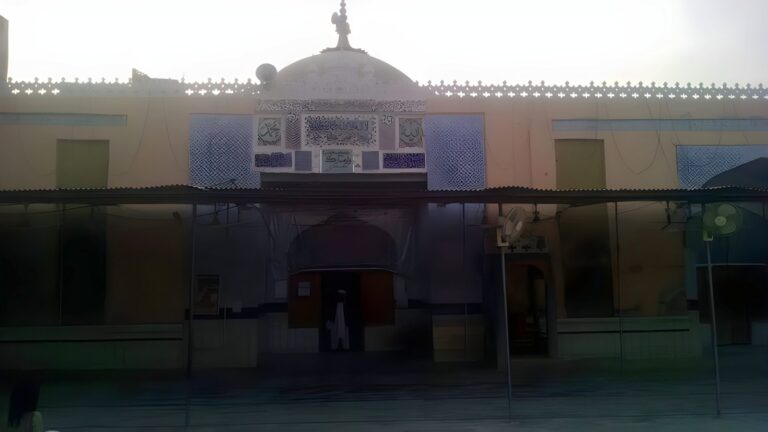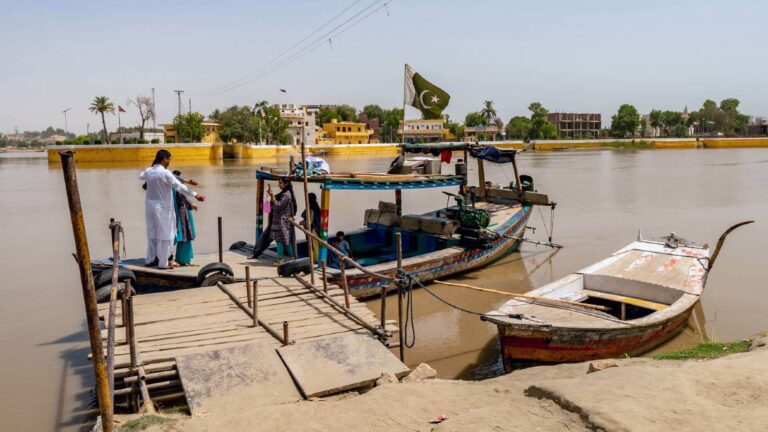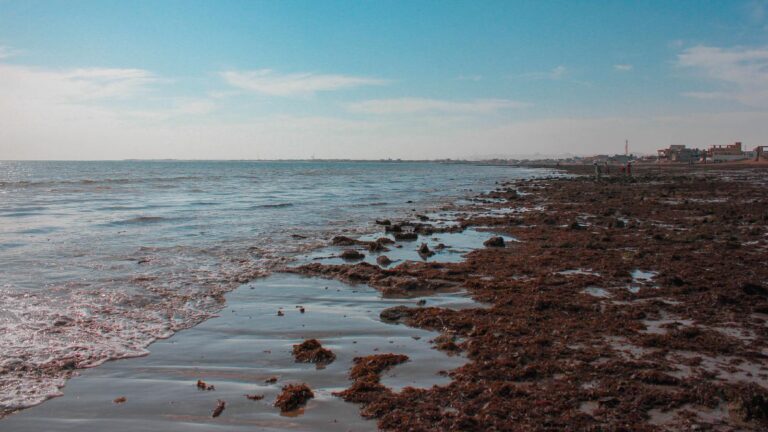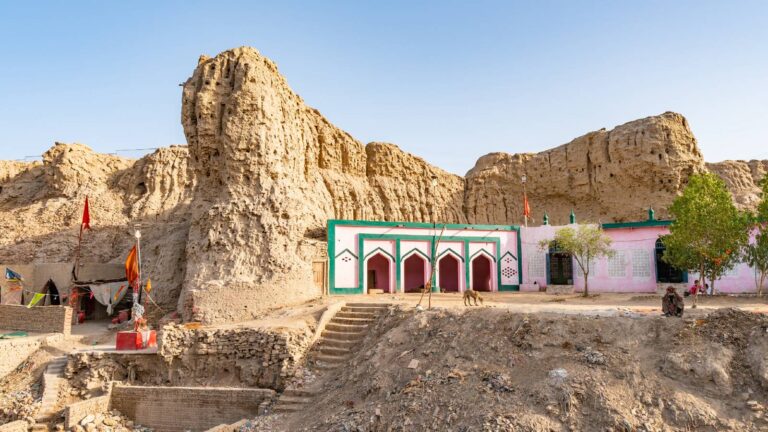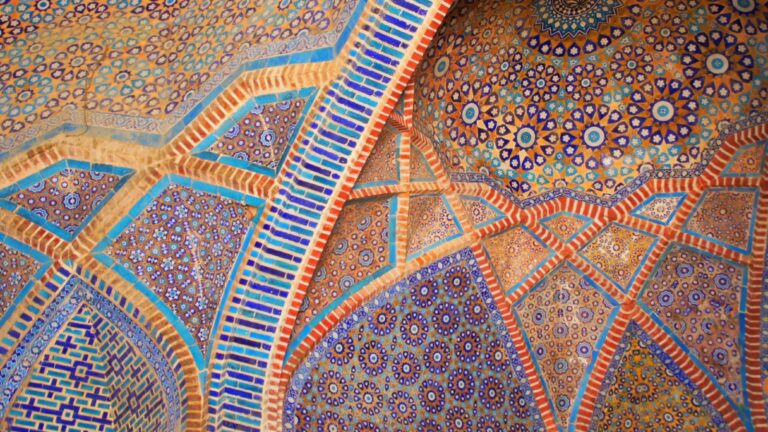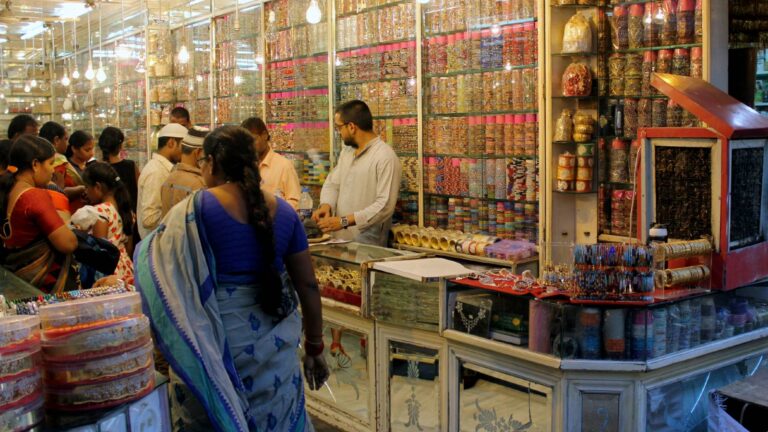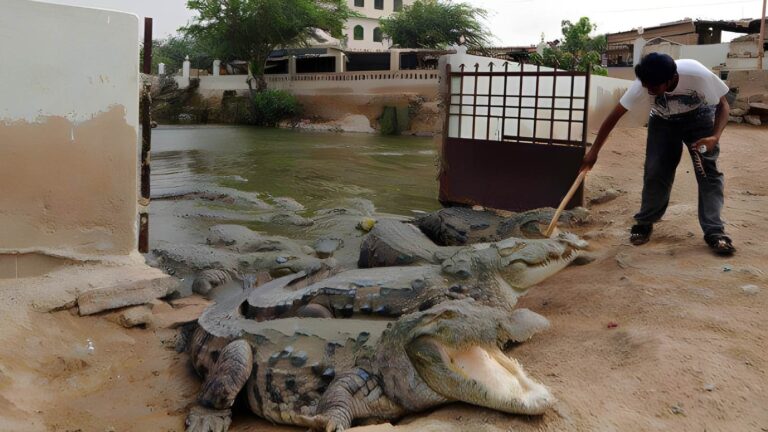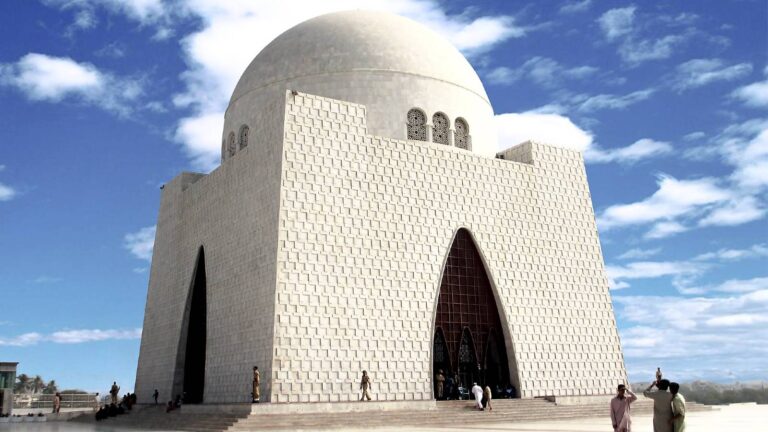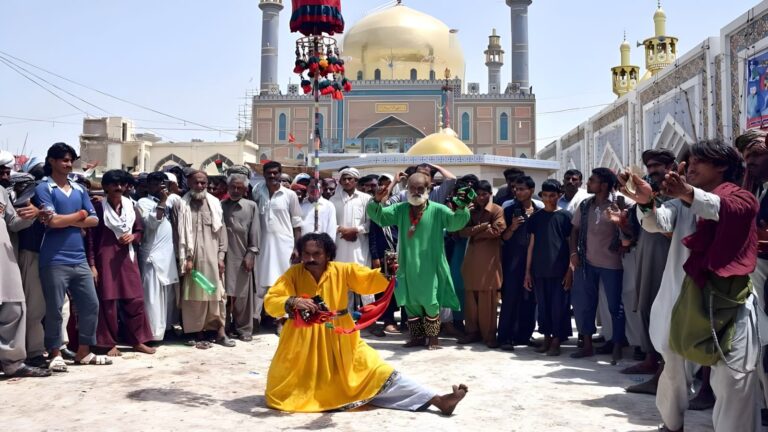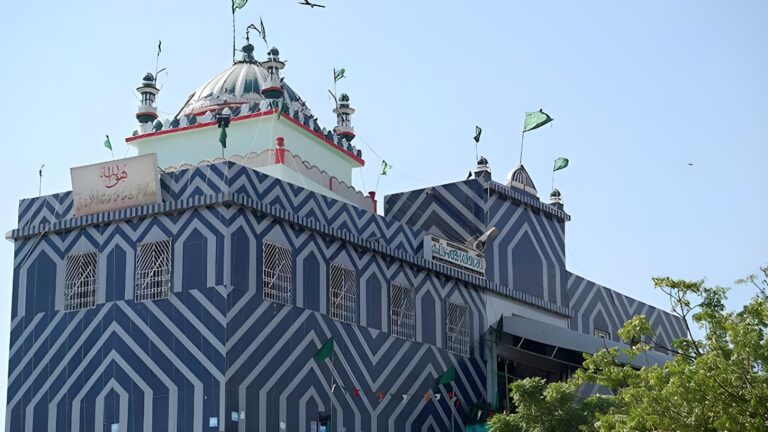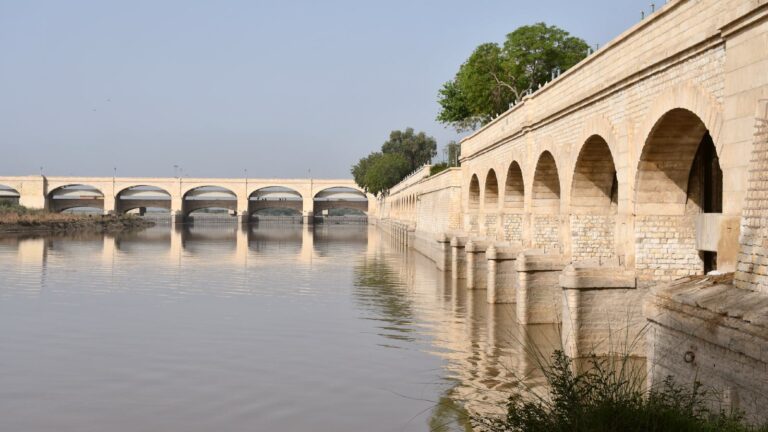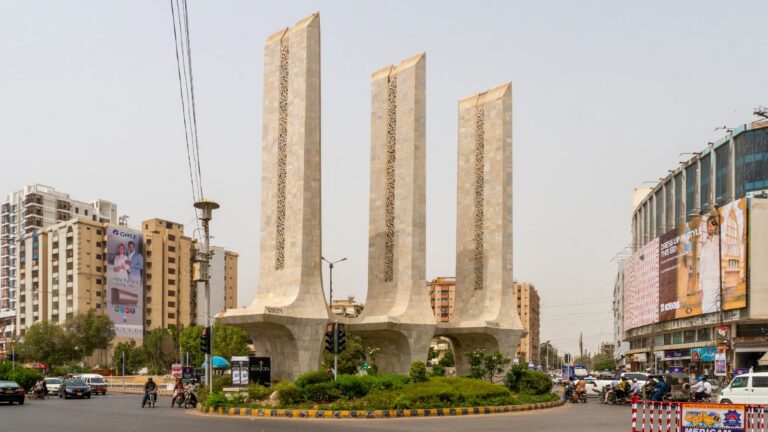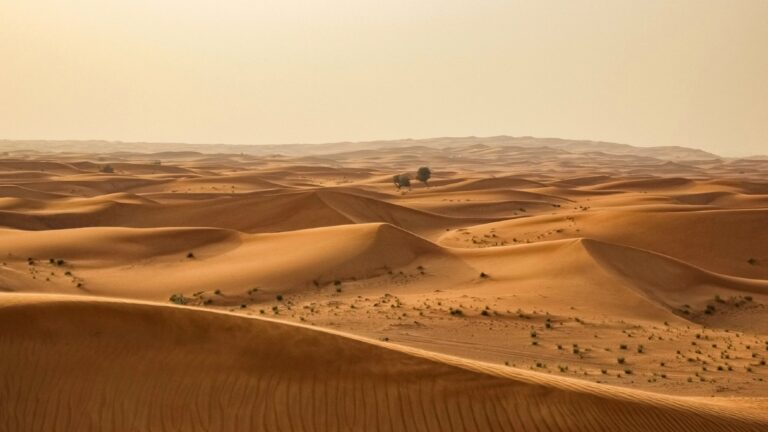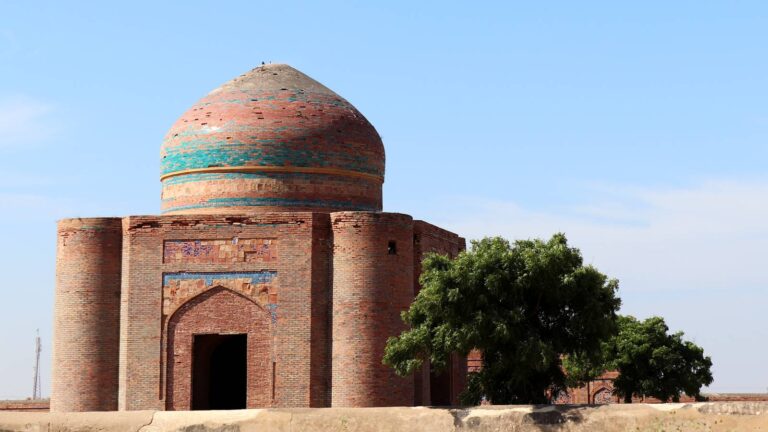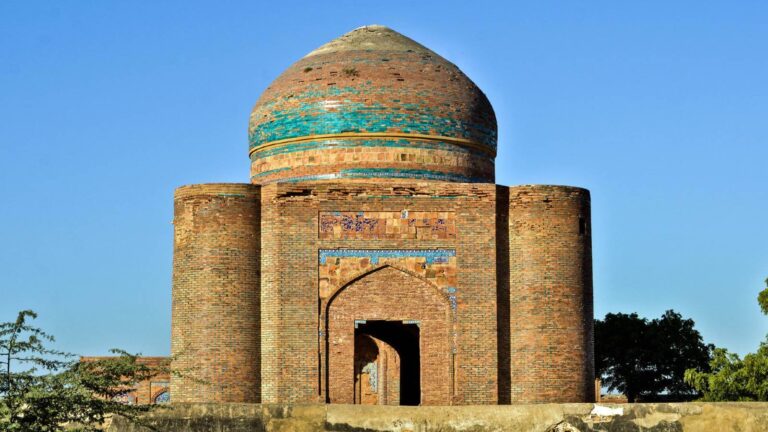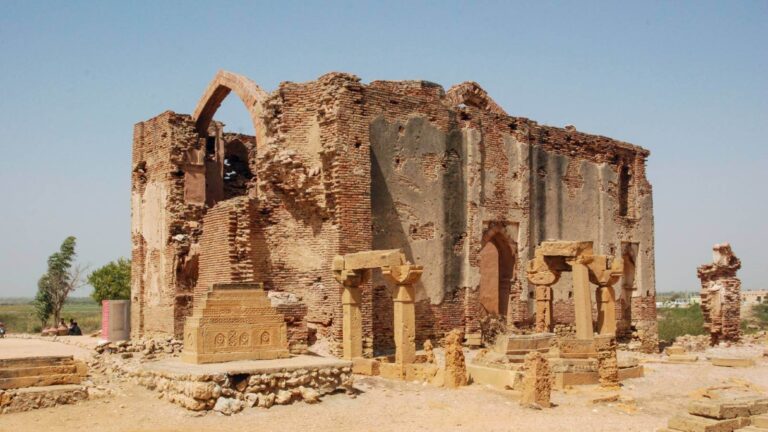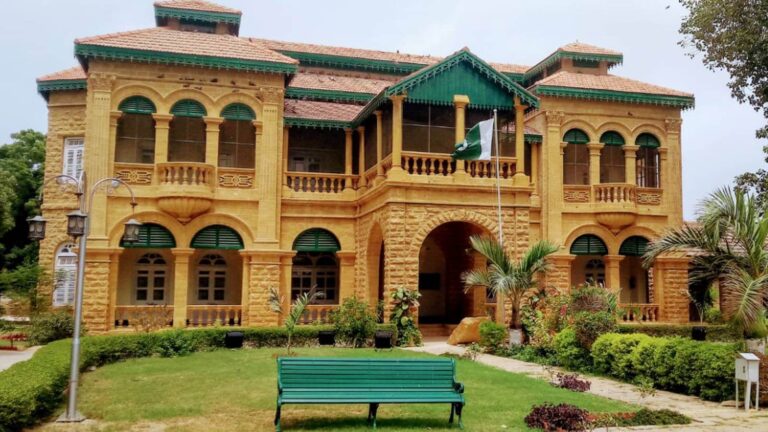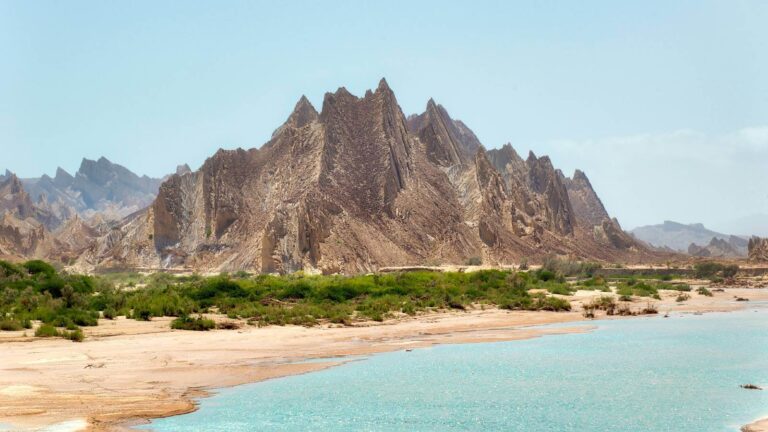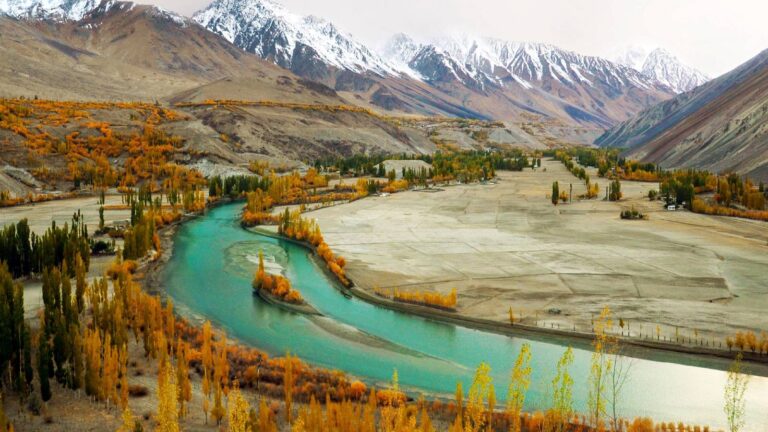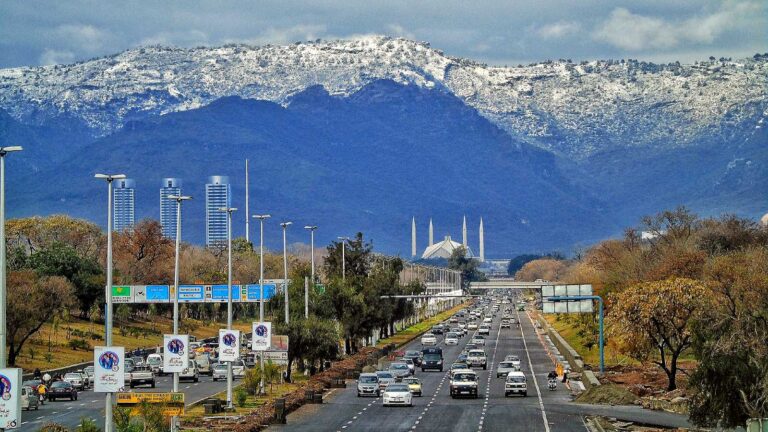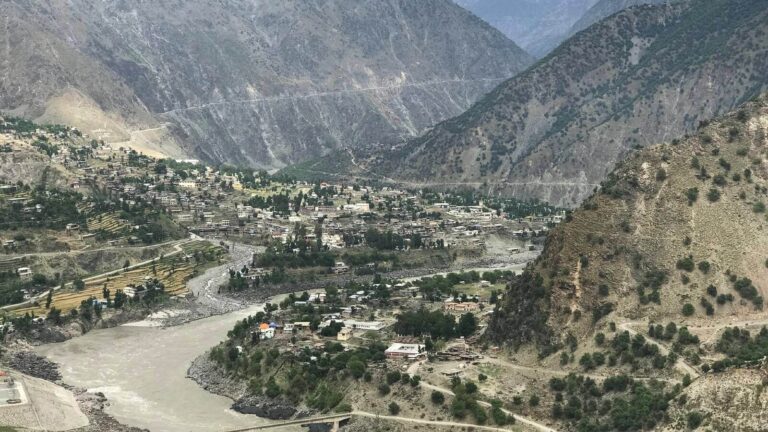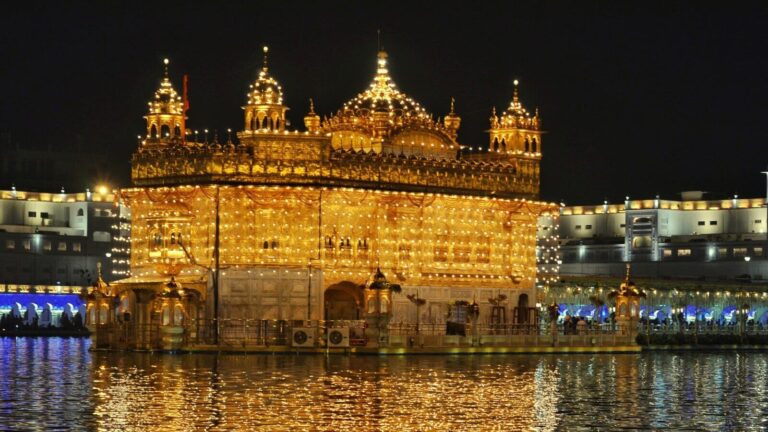Sindh is located on the western corner of South Asia, bordering the Iranian plateau in the west. Sindh is bounded by the Thar Desert to the east, the Khirthar Mountains to the west, and the Arabian Sea in the south.
Sindh is practically overflowing with myriad cultures and historical places. Jains, Hindus, Sikhs, and Muslims all reside within the province. Crumbling remains of forgotten forts and mosques wait by roadsides, while towering forts and majestic mahals still loom over the land.
The province of Sindh has been designated after the river Sindh (Indus) which literally created it and has been also its sole means of sustenance. However, the importance of the river and close phonetically resemblance in nomenclature would make one consider Sindhu as the probable origin of the name of Sindh. Later phonetically changes transformed Sindhu into Hindu in Pahlavi and into Hoddu in Hebrew. The Greeks (who conquered Sindh in 125 BC under the command of the Alexander the great) rendered it into Indus, hence modern Indus.
Pre-History Period
The Indus valley civilization is the farthest visible outpost of archeology in the abyss of prehistoric times. The areas constituting Pakistan have had a historical individuality of their own and Sindh is the most important among such areas. The prehistoric site of Kot Diji in Sindh has furnished information of high significance for the reconstruction of a connected story which pushes back the history of Pakistan by at least another 300 years, from about 2,500 BC.
Evidence of a new element of pre-Harappan culture has been traced here. When the primitive village communities in Baluchistan were still struggling against a difficult highland environment, a highly cultured people were trying to assert themselves at Kot Diji one of the most developed urban civilization of the ancient world that flourished between the year 25, 00 BC and 1,500 BC in the Indus valley sites of Mohenjodaro and Harappa. The people were endowed with a high standard of art and craftsmanship and well-developed system of quasi-pictographic writing which despite ceaseless efforts still remains un-deciphered.
The remarkable ruins of the beautifully planned Mohenjodaro and Harappa towns, the brick buildings of the common people, roads, public-baths and the covered drainage system envisage the life of a community living happily in an organized manner.
Early History Period
The earliest authentic history of Sindh dates from the time when Alexander the Great abandoned his scheme of conquest towards the Ganges, alarmed at the discontent of his soldiers. He embarked a portion of the army in boats, floated them down the Jhelum and the Chenab, and marched the remainder on the banks of the river till he came to the Indus. There he constructed a fleet, which sailed along the coast towards the Persian Gulf with part of his forces, under the command of Nearchus and Ptolemy, whilst Alexander himself marched through Southern Baluchistan and Persia to Seistan or Susa.
At that time Sindh was in the possession of the Hindus, the last of whose rulers was Raja Sahasi, whose race, as is reported by native historians, governed the kingdom for over two thousand years. The Persian monarchs were probably alluded to, for in the sixth century BC Sindh was invaded by them, they defeated and slew the monarch in a pitched battle and plundered the province and then left. Eight years after his accession to the Persian throne, Darius I, son of Hystaspes extended his authority as far as the Indus. This was about 513 BC.
The province is well known for its distinct culture, which is strongly influenced by Sufism, an important marker of Sindhi identity for both Hindus and Muslims. Sindh is home to two UNESCO-designated World Heritage Sites: the Makli Necropolis and Mohenjo-daro.
Sindh is located in a tropical to subtropical region and experiences hot summers and mild to warm winters. During the summer months of May to August, temperatures often surpass 46 °C (115 °F), while the northern and higher elevated regions see an average minimum temperature of 2 °C (36 °F) in December and January.
Situated between the southwest monsoon from the Indian Ocean and the northeast or retreating monsoon influenced by the Himalayan mountains, Sindh avoids the direct impact of both monsoons.
The climate in Sindh is divided into three regions: Siro, the upper region centered on Jacobabad; Wicholo, the middle region centered on Hyderabad; and Lar, the lower region centered on Karachi.
The economy of Sindh is the 2nd largest of all the provinces in Pakistan. Much of Sindh’s economy is influenced by the economy of Karachi, the largest city and economic capital of the country.
Sindh has a highly diversified economy ranging from heavy industry and finance centred in and around Karachi to a substantial agricultural base along the Indus.
Agriculture plays an important role in Sindh with cotton, rice, wheat, sugar cane, bananas, and mangoes as the most important crops.
Sindh is the richest province in natural resources of gas, petrol, and coal.

